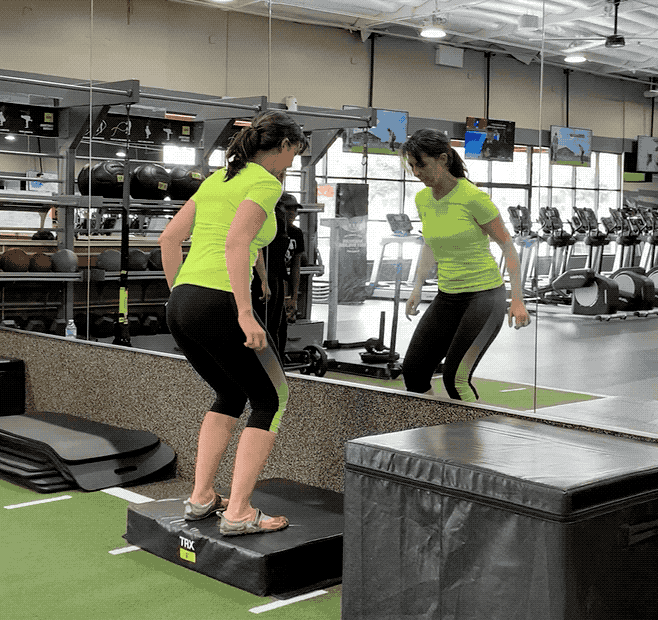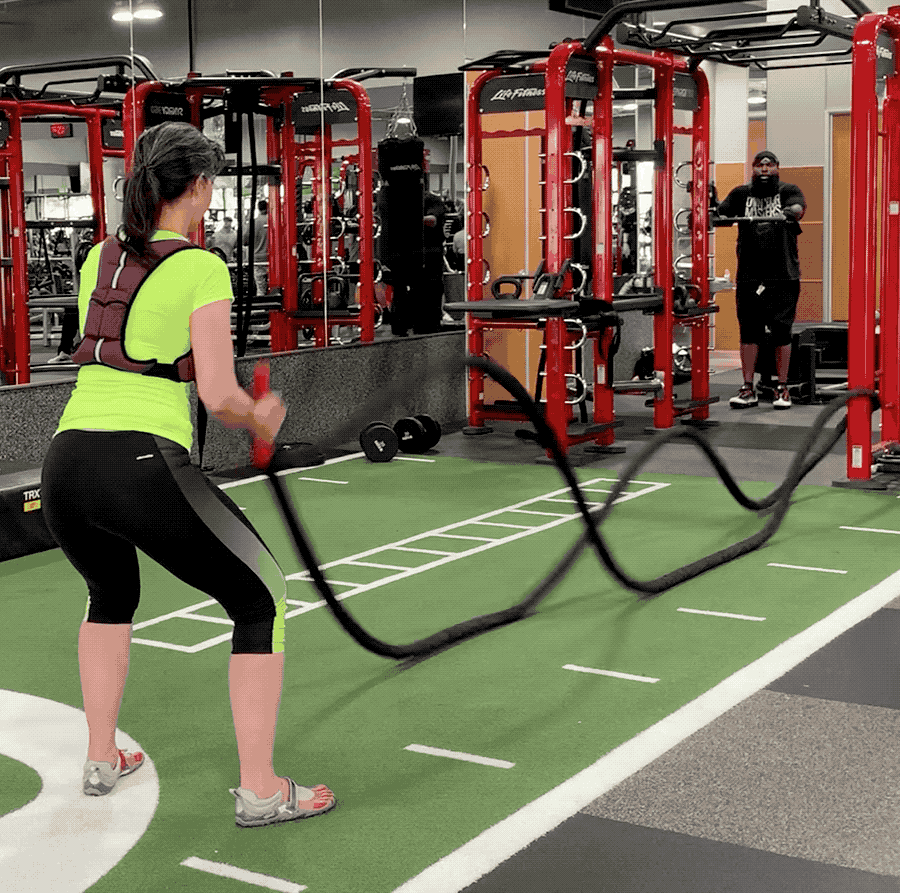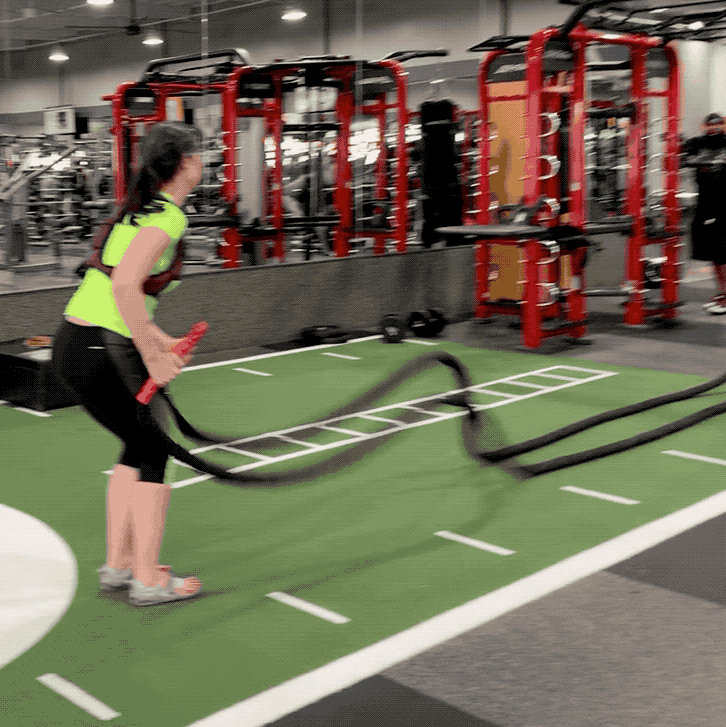The Problem With Pilates and Yoga
This will be an unpopular post.
Have Ehlers-Danlos Syndrome?
You excel at contortionist-friendly activities like yoga and Pilates.
You are better at pulling your joints further than the collagen-typicals.
It’s nice to be good at something because EDS constantly makes you feel like a failure. Who doesn’t like to show off a little? Have you seen my blog.
Yoga and Pilates are easier for us, because they don’t challenge strength and stability. They don’t require athletic power or coordination, or even much moving. A lot of that is done lying down. Since we have trouble being upright and managing circulation and blood pressure, why not, right?
But it’s time somebody said it.
Pilates and yoga for EDS: bad choice!
Why?
Too much stretching.
Stretching reduces the sensitivity of stretch receptors.
The last thing you want to do as a hypermobile person is train more flexibility into your spine. The last think you want to do is force your joints to go further.
To have a better quality of life, we need the opposite: circulation and strength, less mobility in joints.
Pushing any joints to extreme positions causes damage for anyone. Pilates and yoga require you to do both, which is why they are high-injury activities.
Research is showing more and more than static stretching (holding a stretch) is not beneficial to anyone.
Your Precious Spine
Did you know that motion in vertebrae causes pain? I wish doctors understood that. Since they diagnose from scans that are done when a patient is still, they don’t.
It gets worse.
Did you know that the more mobility you have in your spine, the more your brain is prevented from activating muscles that help you move your limbs? Yikes!
It is very hard for someone like me, with such a flexible spine, to open a heavy door. How do I push force through my wobbly body to get the door open? Indeed.
Let’s ask world renown professor of spine biomechanics (yes that’s a thing) Dr. Stuart McGill.
Let’s see his cases studies complete with moving MRIs and the source of back pain. Let’s see how he gets people out of pain. Hang in through the video to see what 3 exercises to do everyday to stabilize your spine. You will be glad you did. Your back will be glad if you start doing them every. single. day.
I hope you made it through this video (it’s a bit advanced), because, like, wow! Who knew! And what an intelligent way to go about curing spine pain.
I only heard of Dr. McGill recently, but I can attest that for myself, there was no getting out of my spine-pain-agony-hell without posture correction and strength, stacking my spine, not slumping, and keeping it stable throughout my day.
Pilates
The foundational Pilates move of pressing your low back into the floor is dangerous. There are wedge-shaped discs at L4 and L5. Pilates works your spine the wrong way. Yikes! Squished pie is not pretty. This is the move that herniated discs. No wonder Pilates hurts so much. Your body is begging you to please stop.
Just because something is popular, doesn’t mean it is a useful or helpful. This “exercise” is especially cruel to anyone with a great ass, as you are required to stress those discs even further. Ever noticed how Pilates junkies are the girls with flat butts? PS - You’ll want strong glutes (which give you a shapely backside) to stabilize your hips, and you won’t get that in Piatles.
What does Dr. McGill have to say about this move?
One of my major issues with Pilates is that one of its key principles is to flatten the spine and “imprint” the lower back to the floor when lying down. This deliberate effort to disrupt the spine from its neutral position and “straighten” one of its natural curves is not healthy and can trigger pain sensitivity in a person who is already sensitized.
Do yourself a favor and skip all the chin tucking of Pilates, which is another great way to herniate a disc, this time in your neck.
Keep your neck upright and stacked, not your head slumped forward, in everything you do.
Another move you are asked to do in Pilates is to suck your belly towards your low back. This does not activate muscles that support the spine, so why bother. It’s just silly. Don’t waste your time on useless exercises. You’ve got to get strong and stable for real!
And what’s with rolling your spine and articulating each vertebrae as much as possible, over and over as you do in Pilates? Dr. McGill says:
Thus the exaggerated fashion of the Pilates’ rollup puts an emphasis on moving through the spine, putting unnecessary load and strain on the discs.
The real goal should be to minimize spinal movement and instead use our hips as primary centers for motion.
This philosophy will allow the back pain to settle.
I recently heard a Pilates instructor tell the story of how he and his Balanced Body colleagues cannot sit still. They were attending a conference and could not stay in their chairs. They were squirming and finally started moving around. They moved to the floor to stretch as the speaker went on. I imagine this was quite a scene, and very rude to the speaker.
This story evidences the dysregulation and dysfunction that the spine straining moves of Pilates build into a body. These people could no longer tolerate sitting. I can relate because I have Ehlers-Danlos, with a very flexible spine. I am natural-born squirmer, always in discomfort. I could not tolerate sitting in school, it was so aggravatingly uncomfortable and downright distracting. But those Pilates people are doing it to themselves. Yikes. What a bad choice.
This instructor taught us some Pilates moves. With each one came the caveat:
“Some people won’t be able to do this.”
“This is really hard to do this without X muscle engaging, which you don’t want.”
“Watch out for X happening in this exercise, which you don’t want..”
My opinion: If an exercise is that complicated, find a better one. If it recruits muscles you don’t want to involve, if it is straining, move on. It’s a big world out there and there are much better choices. There are exercises that by their very nature coax you to do them correctly and well. There are exercises that promote healthy joint moves, but you won’t find them in Pilates. Using a TRX Suspension Trainer properly (find someone who as been trained by TRX) will.
As long as I’m making myself so unpopular, I will add that Pilates is very much about selling expensive equipment. Facepalm.
Yoga
Bending and twisting of yoga poses weakens the collagen fibers that should be stabilizing your spine.
I hope you watched that Dr. McGill’s video above and understand how discs are damaged by this.
The spine is not a ball and socket joint like the hip. It is not built for all this excessive twisting, flexing and extending that has become so popular. People were not doing this when I was growing up, and people had better posture back then, which you can see in old TV shows and movies.
The spine is the protective housing for the spinal cord. It deserves the utmost respect. Help unburden your nervous system by taking the best care of your spine you can.
Our hypermobile hips should not be pushed to be more flexible either, which yoga does. Doing so will increase your subluxations and labral strain. That’s no fun. Who wants a labral tear, which is a common yoga injury. See Pub Med The Hyperflexible Hip.
But Yoga and Pilates Make Me Feel Good
Hmmmmmm.
Are you sure that is what is happening.
Let’s look closer at what’s happening when we stretch into extreme moves. Let’s ask Dr. McGill about that, shall we?
Physiologically, pulling your knees to your chest, or other similar stretches, trigger the “stretch reflex.” This is a neurological phenomenon that reduces pain sensitivity. This provides about 15-20 minutes of pain relief for some, making it a short-term fix.
The problem is that in putting in your spine in this position, you are aggravating your discs and after you’ve experienced temporary relief, the pain will return, often worse than before.
Thus begins a vicious cycle with a misinformed back patient who thinks their only solution to pain is to “stretch it out,” not realizing that this is in fact contributing to their pain.
The key is to stop the cycle!
Stretching activates stretch receptors, causing analgesia. But the pain is going to come back and worse because you have done something your body does not want you to be doing to, and it will tell you to stop hurting yourself by giving you more pain. This is how Pilates and yoga become addictive.
I have noticed that if I start stretching every day, it feels good at first. But then I will have extra pain in new ways. No thank you.
Stop letting chiropractors adjust you for the same reason. I got into terrible trouble getting chiropractic adjusting, before I was diagnosed. I did not know better. I paid a dear price. All it did was make me worse. Much, much worse.
It may be a rough transition, to stop stretching and stop messing with this cycle of pain aggravation. But there is less pain at the other side, when your body calms down.
It’s like scratching a rash and picking at a scab. Feels good at first but makes it hurt more later and prevents proper healing.
Train For Stability and Strength
Remember, Kids, train for stability and strength. Do not create more flexibility. The extra flexibility we already have leads to joint dysfunction and a greater chance of injury. Do not push your body in that direction.
Flexibility makes you weaker and inhibits your abiltlty to activate muscles.
Overly-lengthened muscles are less powerful.
Static stretching is of questionable value to anyone and done before exercise definitely increases injury rates.
Do not push your joints to the end range of motion. That is injurious for anyone.
Practice keeping your joints in a shorter range. Look in mirrors and at candid pics of yourself so you can see what you do with your joints. Work to improve it.
A little stretching may have value if you are dealing with a muscle imbalance or injury. Keep it light and as little as possible.
I stretch just my calves sometimes because I have plantar fasciitis in my feets. I also sleep in plantar fasciitis splints, which make my feet happy. I pull on my toes to stretch them everyday so I don’t get hammer toes. But for me, that’s it. Moving well in life, my body gets plenty of stretch and my muscles are balanced.
Here I am exercising with my weighted vest.
I march up the treadmill without holding on to get deep circulation and practice balance.
Bones, tendons and ligaments do not have a direct blood supply, so get blood flowing for optimal healing. This does the trick. I do it for 2 minutes and rest for 2 minutes. Repeat.
I practice jumps because it programs my body to engage my core fully. When you jump, the nervous system fires up muscles to protect the spine. I think this also improves my nervous system tone. I have less symptoms of dysautonomia and POTS than I ever have had.
Bones need impact to rebuild strong. Osteoporosis is a complication of EDS. Impact stimulates an electrical charge in bones that draws in minerals.
No pic here, but I also get on the treadmill and run for 10 minutes, for the circulation and impact.
A suitcase carry is also a great exercise for bone density and back stability and strength. Plus it is so useful in real life. Being able to lift and carry is a gift that makes life easier.
Notice how I move, how stable I keep my spine, and how I hip hinge. That’s the key to less spine pain and strain. The hip is the joint we should be relying on to move, not crunching the spine around.
It has taken me years of Vitamin C shots, posture correction and strengthening to be able to tolerate these activites with ease, as I was born a very flimsy, very severely-affected, very pathetic EDSer.
I spent much of my life disabled and homebound. For a lot of that I couldn’t even go for a walk, I was so sick. For much of my life, my spine pain was so bad I could have committed suicide over it. I was on morphine everyday for years.
That was a long time ago.
And here I am now, in part because I quit Pilates. I stopped straining myself with useless exercises. I stopped creating more dysfunction by stretching. I refuse do any exercise that isn’t going to help me.
Because I can do these exercises, I can participate more life. I have a much better quality of life. I have strength and confidence, and I have lots of endurance.
This choice is up to you, how you want to use your joints, and what you want for yourself.
Be intelligent and informed about all your medical decisions.
Want more Dr. McGill? Take a deep dive here.







